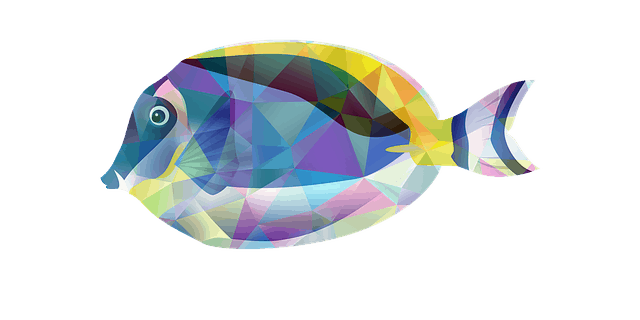20-Gallon tanks are very popular with aquarium hobbyists. They fit in almost any room and you just can’t beat the price of a tank this size. In my opinion, a 20-gallon tank is the gateway to larger aquariums down the line. The size of a tank typically reflects the size of the fish. Therefore, what’s the biggest fish you can put in a 20-gallon tank?
You can keep up to 20 total inches of fish in a 20-gallon aquarium – the ‘rule of thumb’ for stocking a fish tank is one inch of fish per gallon of water. Multiple smaller schooling fish like neon tetras or a single larger fish like a fancy betta would do well in a 20-gallon. Any fish over 4 inches long, regardless of how many you have, shouldn’t be kept in a 20-gallon tank as they need more space to swim, explore, and forage.
Now that you know you can keep fish that are up to 4-inches long – totalling 20-inches overall – in a 20-gallon tank, let’s dive deeper into this topic together. We’ll learn which freshwater and saltwater species are ideal for a tank this size, if a tank this size is ‘big enough’ for adult fish, and how to tell if your pets have outgrown their tank.
So, if you’re ready to learn more about stocking a 20-gallon tank and how ‘big’ you can go, then let’s begin!
What Big Fish Can Go in a 20-Gallon Tank?
To put it simply, ‘big’ fish – which is, by aquarium standards, anything over 4 inches in length – should not be kept in a 20-gallon tank. This size aquarium doesn’t allow enough space for fish of substantial size to swim about freely. In my opinion, it’s cruel to confine larger fish to such a small aquatic environment, whether they be freshwater or saltwater fish. Big fish need a big tank – at least 55-gallons but a 70-gallon tank wouldn’t cost you much more.
The ‘biggest’ fish, in my opinion, for a 20-gallon tank would be around 3-inches long fully-grown. When it comes to cichlids, for example, dwarf angelfish are okay but common angelfish aren’t as they can reach lengths of 5 to 6 inches. Discus and Oscar fish get even bigger (up to 8 inches in diameter) and therefore must be kept in a much larger tank (55-gallons minimum).
Keep reading to find out specifically which fish you can keep in a 20-gallon.
Is a 20-Gallon Tank Big Enough for Adult Fish?
Depending on the species, a 20-gallon tank can be big enough for smaller, schooling fish that only reach a maximum length of an inch or two when fully grown. As well, solitary fish that grow no bigger than 4 inches can also be kept in a 20-gallon aquarium. Though the general rule-of-thumb is one inch of fish per gallon of water, this may not apply to active fish that need lots of open space to swim about.
In addition, a 20-gallon tank is a great ‘starter’ for juvenile fish that get to be bigger than 4-inches in length. However, you must be prepared to move these fish to a larger tank once they ‘outgrow’ their aquatic environment. If you don’t, the tank will be overcrowded which will negatively affect the water parameters, not to mention the social dynamic and stress level of its inhabitants.
How Many Fish Can You Put in a 20-Gallon Tank?
Using the 1:1 ratio (one inch of fish for every gallon of water), you can stock a 20-gallon tank with up to 20 total inches of fish. For example, you can keep 16 to 20 small, schooling fish like neon tetras that only grow to be an inch or so in length in this sized tank. Keep in mind the girth or weight of the fish as well. Heavier fish almost always need a bigger aquatic environment. For example, a 5” long Oscar will need much more space to swim than 5” of neon tetras? (5 total fish).
Another real-life example for you is a 10-gallon tank I have with 8 neon tetras. You couldn’t keep one 8” fish in this size aquarium as it’s much too small. You really must use some common sense when choosing your fish.
When stocking your 20-gallon tank, be sure to keep in mind the necessary water parameters for each species you intend to keep. These include temperature, pH, and salinity (if it’s a saltwater tank). You must do your research in advance. If you don’t fill the aquarium with fish that require like-water conditions, you’ll have an unhealthy aquatic environment and many of your pets will get sick and/or die.

What are the Best Fish for a 20-Gallon Tank?
There are 3 things you need to consider before stocking a 20-gallon aquarium:
- Temperament – aggressive or predatory fish need more space in an aquarium to help keep their hostility at bay.
- Size – the bigger the fish, the more space it needs – confining a larger fish inside a too-small tank is cruel and will cause stress to your pet.
- Social behavior – schooling or shoaling fish need to be kept in groups for their own well-being. Solitary or mating fish prefer to be kept alone or in pairs.
The 10 best freshwater fish for a 20-gallon tank include dwarf angelfish, cardinal tetras, cories, dwarf gouramis, harlequin rasboras, mollies, neon tetras, platies, swordtails, and zebra danios. Even invertebrates like cherry shrimp and crustaceans like fiddler crabs would work well in this sized tank.
The 10 best saltwater fish for a 20-gallon tank include banggai cardinalfish, blue damsels, percula clownfish, dartfish, dottybacks, firefish, fire gobies, green chromis, royal grammas, and wrasses. Reef-safe shellfish like harlequin shrimp and hermit crabs would be a great addition to a tank this size.
Of course, there are many more larger fish such as goldfish that would do great in a 20-gallon tank. The lists provided above are just to get you started so when you go down to your local fish store, you can compare the sizes of the fish mentioned here with what’s available to you in the physical world.
*Keep in mind: don’t stock your 20-gallon tank with any more than 20 total inches of fish and make sure that the ones you choose are no bigger than 4-inches long when fully grown, regardless of how many you have.

How Many Betta Fish Can You Keep in a 20-Gallon Tank?
Bettas are a great choice for a 20-gallon aquarium. Depending on the size and species, you can have anywhere from 1 to 5 fish. Fancy bettas like Siamese fighting fish, for example, are highly aggressive and reach lengths of up to 3 inches. Therefore, you should keep only one of this species in a 20-gallon tank.
Never keep more than one male betta in the tank at a time as they’ll fight each other for dominance. As well, don’t mix male and females in the same tank – unless temporarily for breeding purposes, that is. If you want more than one betta, you need to create a ‘female betta fish sorority’ tank.
How to Tell when Fish have Outgrown a 20-Gallon Tank?
There are ways to determine if your aquatic pets have outgrown their tank. If they’re acting abnormally aggressive, then they probably need a bigger tank since they’re fighting for space or territory within it.
If your fish are sick or stressed, it could be because the tank is too small and they feel overcrowded. Watch for signs of illness which include lethargy, loss of appetite, hiding, erratic swimming and gasping for air.
Lastly if the fish are going to grow larger than 4” in length then it’s probably time to consider moving them to a larger home.
Conclusion
To conclude, depending on the temperament, size, and social behavior of your aquatic pets, you can usually keep up to 20 total inches of fish in a 20-gallon aquarium. This, of course, is just a guideline and based on the premise of one inch of fish per every gallon of water.
In my opinion, any species over 4 inches in length shouldn’t be kept in a 20-gallon tank as it doesn’t allow enough space for them to swim, forage and explore freely – especially when kept with other fish. When it comes to aquariums, bigger is always better!
I hope this article has answered your questions regarding the biggest fish to stock a 20-gallon tank with. Thanks for reading and good luck with your aquarium hobby.
Related Posts
Super Cool Fish for a 10 Gallon Tank
What is a 40 Gallon Breeder Tank and why you might want one






